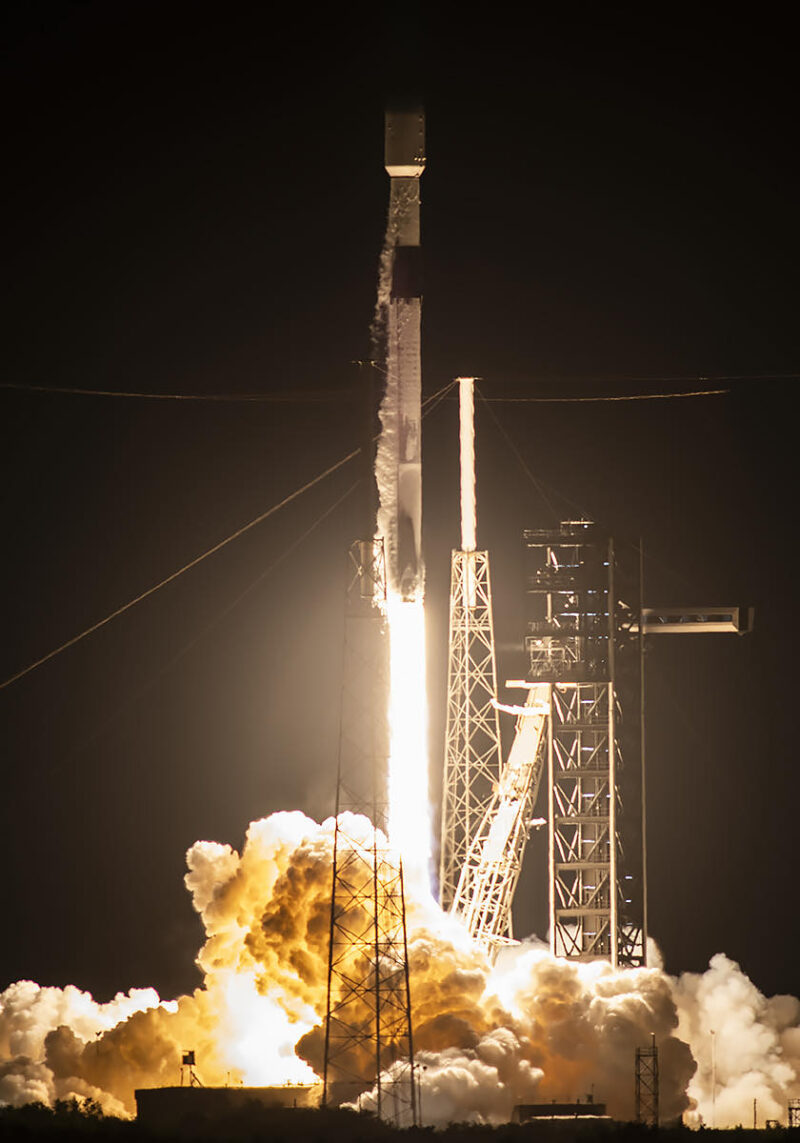
Following this morning’s launch of a 14-times-used booster from the East Coast, SpaceX is gearing up for its second pre-weekend Falcon 9 flight from Vandenberg Space Force Base, Calif. Liftoff of the second act of an anticipated Friday double-header of Starlink-laden missions—including six “Direct-to-Cell” satellites—is targeted during a four-hour “window” that falls between 7:31 p.m. PDT and 11:25 p.m. PDT, with a suite of backup options on Saturday from 7:25 p.m. PDT.
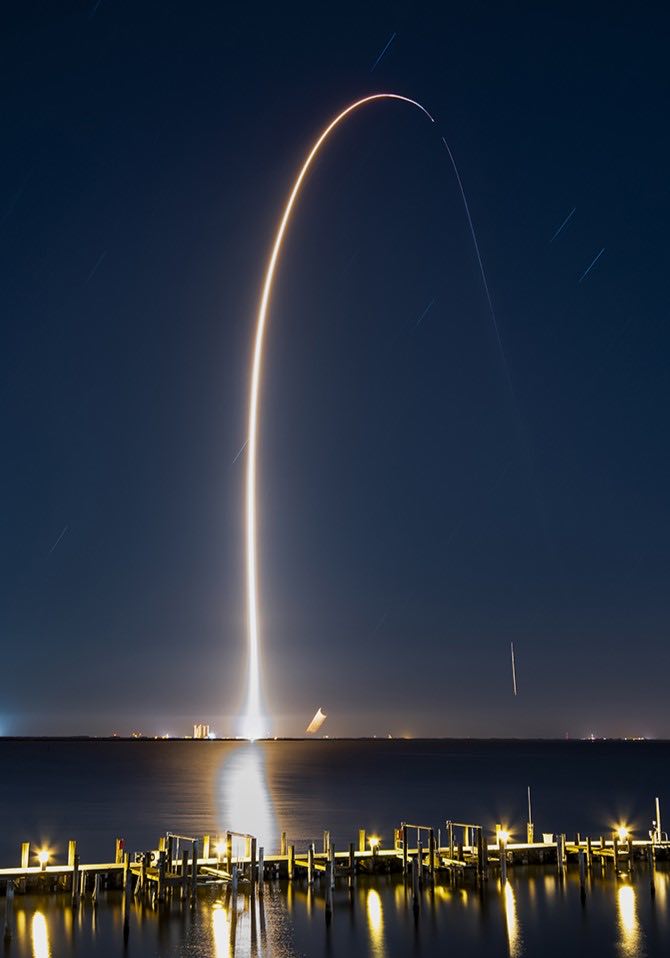
Flying tonight’s mission is the B1081 booster, which came online for the first time last August to deliver Dragon Endurance and her Crew-7 quartet of NASA astronaut Jasmin Moghbeli, Denmark’s Andreas Mogensen of the European Space Agency (ESA), Satoshi Furukawa of the Japan Aerospace Exploration Agency (JAXA) and Russian cosmonaut Konstantin Borisov for their 6.5-month Expedition 69/70 increment at the International Space Station (ISS). Two additional launches of B1081 last November and December delivered SpaceX’s CRS-29 Cargo Dragon for a month-long research stay at the station and a 23-strong batch of Starlink internet communications satellites to orbit.
Early in February, B1081 launched NASA’s $805 million Plankton, Aerosol, Cloud, Ocean Ecosystem (PACE) mission to perform critical measurements of our planet’s oceans, atmosphere and climate on a global scale. And just last month, she also lifted the 53-payload Transporter-10 mission, setting a new launch-to-launch record for a single Falcon 9 in 2024 of 25 days, 15 hours and 32 minutes between flights, the fourth-fastest turnaround of any SpaceX booster to date.
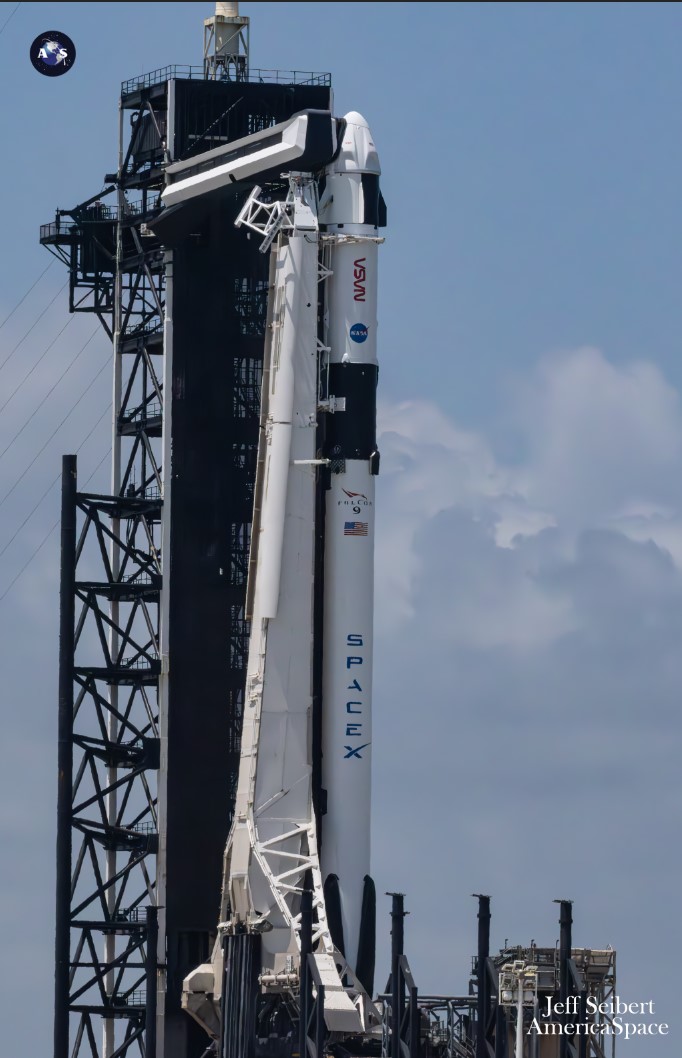
In readiness for tonight’s launch, the West Coast-based Autonomous Spaceport Drone Ship (ASDS), “Of Course I Still Love You”, departed Port of Long Beach earlier this week, bound for an offshore recovery position in the Pacific Ocean. As well as marking B1081’s third mission of 2024, it will also be the 12th Falcon 9 flight out of Vandenberg since the start of the year, an average cadence of a launch every eight days.
All but one of those missions have been devoted to Starlink. All told, more than 200 of these flat-packed internet communications satellites have been lofted this quarter from the West Coast, in addition to the multi-customer Transporter-10.
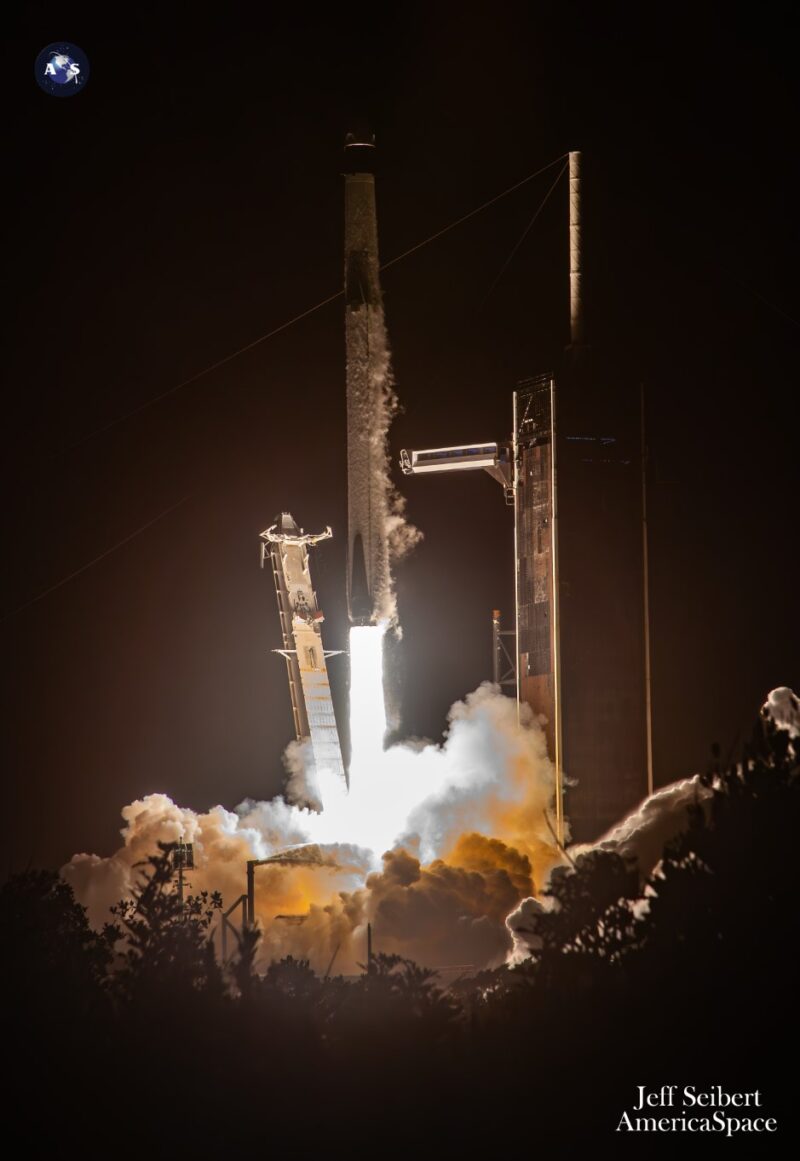
An on-time launch tonight from Vandenberg’s Space Launch Complex (SLC)-4E will see B1081 burn her nine Merlin 1D+ engines for the opening 2.5 minutes of ascent, before separating from the Falcon 9 and descending to alight on the deck of OCISLY to complete the 11th West Coast drone ship touchdown of 2024. The rocket’s single Merlin 1D+ Vacuum second-stage engine will then ignite for six minutes to deliver the 21 Starlink satellites into orbit, for deployment at 62 minutes and 28 seconds after liftoff.
Tonight’s mission will occur only hours after another veteran Falcon 9, tailnumbered B1069, lit up the Florida Coast in a spectacular 5:12 a.m. EDT liftoff from storied Space Launch Complex (SLC)-40 at Cape Canaveral Space Force Station. The dazzling pre-dawn light and fire show occurred right on the opening of a 58-minute “window”, thanks in no small part to near-perfect Space Coast weather, which had earlier pledged 90-percent favorability with a small risk of violating thick cloud and liftoff winds rules.
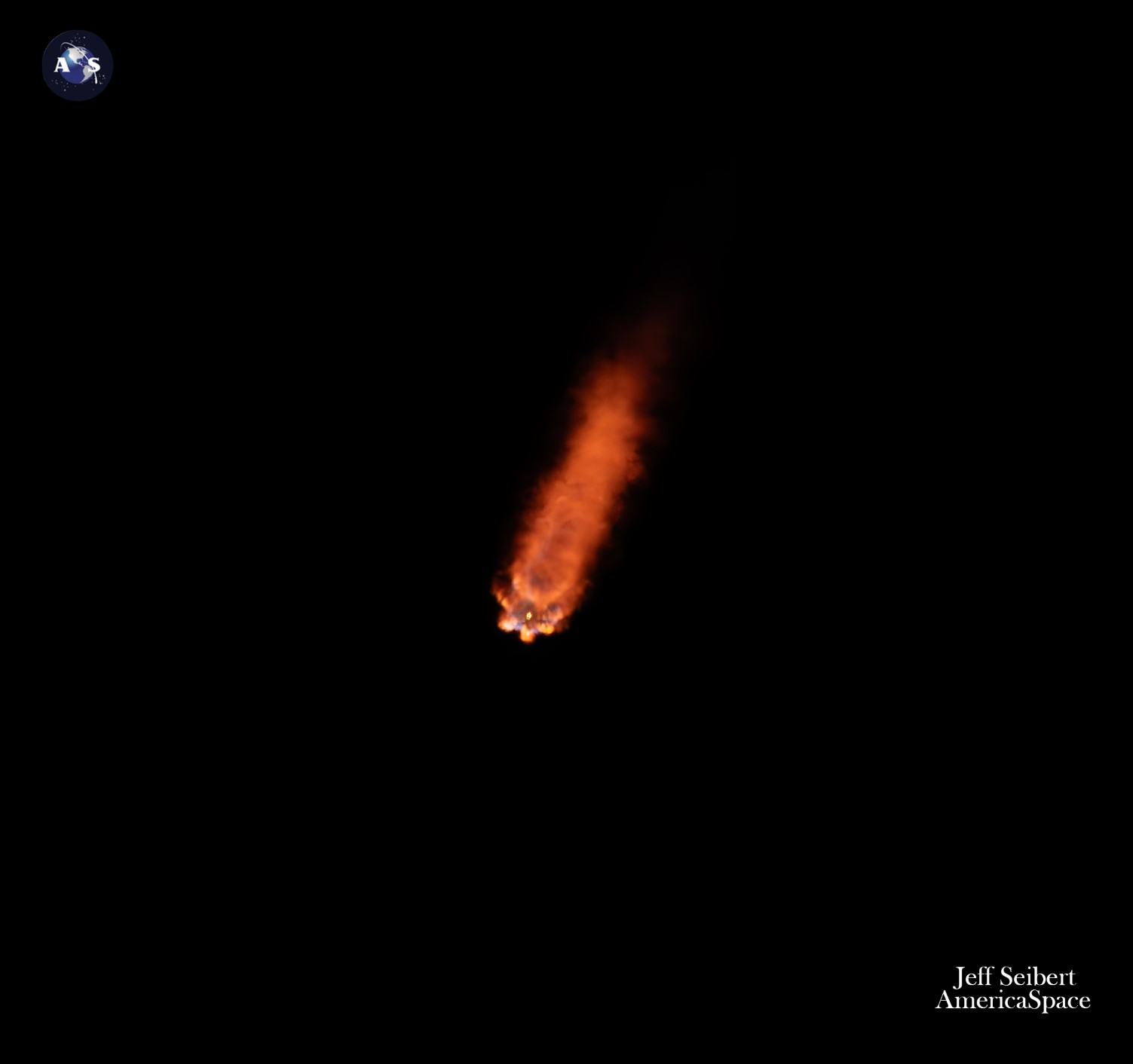
“By launch time Friday morning, winds and remnant high clouds will taper off through the window, leaving only a slight risk of a liftoff wind or Thick Cloud Layers Rule violation,” noted the 45th Weather Squadron at Patrick Space Force Base in its L-1 update. Laden with 23 Starlinks, B1069 conducted a picture-perfect first-stage burn, before descending to an on-point touchdown on the East Coast-based ASDS, “A Shortfall of Gravitas”, for this particular drone ship’s 65th Falcon 9 “catch” since August 2021.
For B1069, reaching 14 launches—which makes it the ninth booster to do so—is an impressive figure it came close to never seeing at all. She entered SpaceX’s fleet in December 2021, delivering the research-laden CRS-24 Cargo Dragon on the first leg of its month-long stay at the ISS. But she was almost lost seconds after touchdown, when she came within a hair’s breadth of missing the deck of the drone ship and toppling into the ocean.

The incident necessitated substantial repairs—including a brand-new suite of Merlin 1D+ first-stage engines—before B1069 re-entered service to log three missions in the second half of 2022: emplacing 54 Starlinks to orbit in August of that year, Eutelsat’s Hotbird 13F geostationary communications satellite the following October and 40 broadband satellites in December for London, England-based OneWeb.
Eight more flights followed for B1069 last year, including seven Starlink batches and the dual-stacked SES-18 and SES-19 geostationary communications satellites for Luxembourg-based provider SES. Two of her 2023 missions set new records in March and December for the shortest interval between pairs of SpaceX launches.
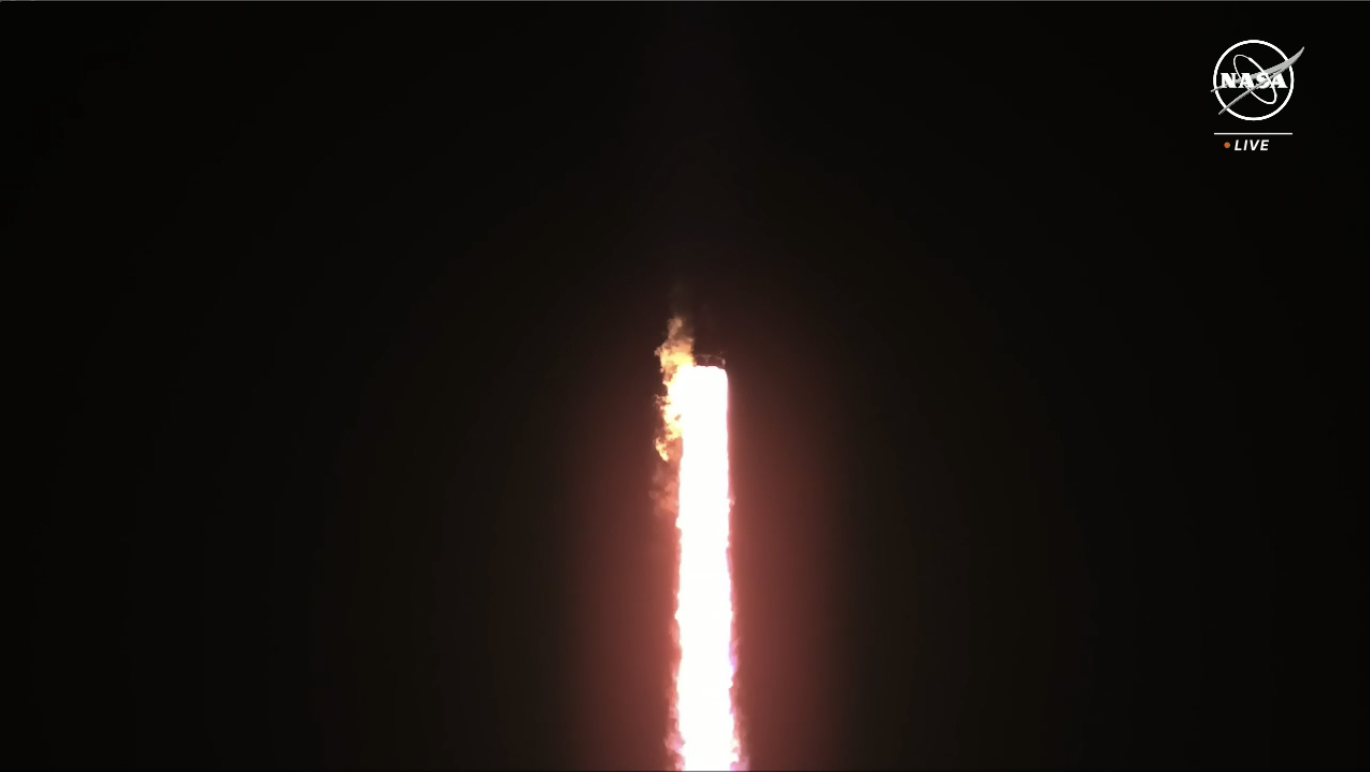
As a network, Starlink enables high-speed and low-latency internet provision to over 70 sovereign nations and international markets in North and South America, Europe, Asia, Oceania and Africa. Landlocked Eswatini—formerly Swaziland—in southern Africa and Honduras and Paraguay joined Starlink in December and SpaceX revealed that network availability was extended to Argentina and Mongolia in March 2024.
The downsized V2 Mini satellites, first flown in February of last year, boast three to four times greater “usable” bandwidth than earlier Starlink iterations. “V2 Minis include key technologies—such as more powerful phased-array antennas and the use of E-Band for backhaul—which will allow Starlink to provide 4x more capacity per satellite than earlier iterations,” SpaceX explained. “Among other enhancements, V2 Minis are equipped with new argon Hall thrusters for on-orbit maneuvering.”

Florida-based intercity operator Brightline adopted Starlink on its trains in 2023, the first passenger rail service in the world to do so. Additionally, El Salvador’s Ministry of Education has begun integrating Starlink capability into its schools to help close the digital divide between urban and remote rural communities and 50 Rwandan schools are now connected via Starlink’s high-speed internet service.
And in January, SpaceX lofted its first six “Direct-to-Cell” Starlinks, which permit mobile network providers to offer “seamless global access to texting, calling and browsing”, whether “on land, lakes or coastal waters”, without the need to change hardware or firmware. Within six days of that first launch, SpaceX engineers sent and received their first text messages via Direct-to-Cell and as of March Starlink reportedly has about 2.6 million registered subscribers or customers worldwide.






4 Comments
Leave a Reply4 Pings & Trackbacks
Pingback:SpaceX Aims to Complete Weekend Triple-Header With Tonight’s Bandwagon-1 Launch - AmericaSpace
Pingback:SpaceX Aims to Complete Weekend Triple-Header With Tonight’s Bandwagon-1 Launch - SPACERFIT
Pingback:SpaceX Completes Weekend Triple-Header, Launches 11-Payload Bandwagon-1 Stack - AmericaSpace
Pingback:SpaceX Completes Weekend Triple-Header, Launches 11-Payload Bandwagon-1 Stack - SPACERFIT